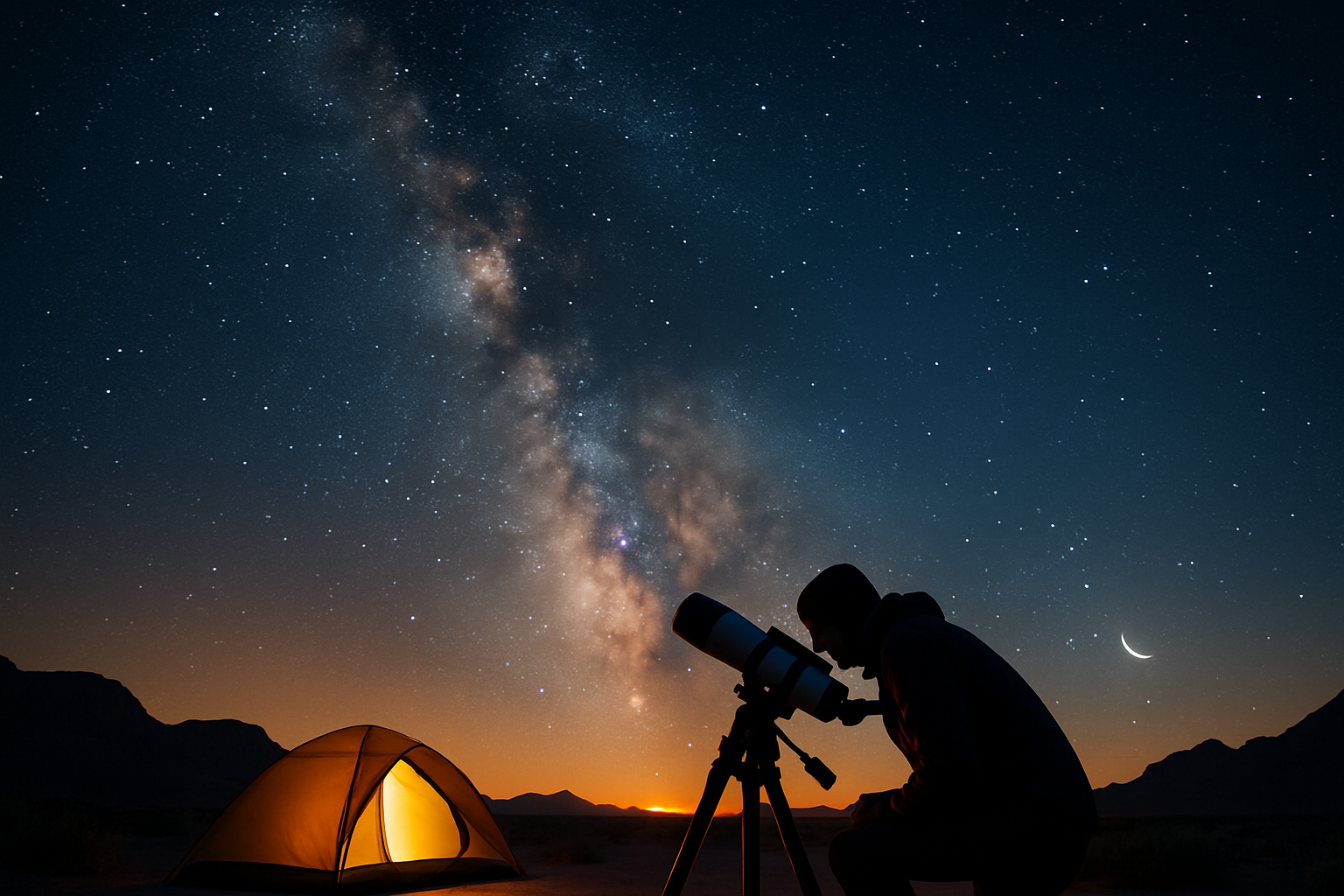Exploring the Untapped Potential of Astro-Tourism
Venture beyond the confines of Earth and embark on a celestial journey through the burgeoning world of astro-tourism. This niche travel trend is captivating stargazers and adventure seekers alike, offering a unique blend of scientific discovery and awe-inspiring natural wonders. As light pollution diminishes our view of the night sky in urban areas, astro-tourism provides a gateway to rediscover the marvels of the cosmos.

The International Dark-Sky Association (IDA) has been at the forefront of this movement, certifying locations worldwide that meet strict criteria for sky quality and outdoor lighting. From the NamibRand Nature Reserve in Namibia to the Aoraki Mackenzie International Dark Sky Reserve in New Zealand, these destinations are drawing increasing numbers of visitors eager to witness the cosmos in its full glory.
Astronomical Events as Travel Catalysts
While dark sky destinations offer year-round appeal, specific astronomical events have become major drivers for astro-tourism. Solar eclipses, in particular, have sparked a new wave of travel planning, with enthusiasts traversing the globe to position themselves in the path of totality. The 2017 total solar eclipse that crossed the United States led to a surge in domestic travel, with some small towns experiencing a temporary population boom as visitors flocked to witness the rare event.
Other celestial phenomena, such as meteor showers, planetary alignments, and the aurora borealis, also serve as compelling reasons for travelers to plan trips around astronomical occurrences. This has led to the development of specialized tour packages and accommodations designed to maximize viewing opportunities for these events.
The Intersection of Astronomy and Luxury Travel
As astro-tourism gains popularity, the luxury travel sector has taken note, creating high-end experiences that cater to discerning stargazers. Exclusive resorts and lodges in prime dark sky locations now offer amenities such as private observatories, in-house astronomers, and specially designed suites with retractable roofs or dome ceilings for in-bed stargazing.
In Chile’s Atacama Desert, considered one of the best places on Earth for stargazing due to its high altitude and low humidity, luxury hotels have incorporated astronomical experiences into their offerings. Guests can partake in nighttime desert excursions with expert guides, using state-of-the-art telescopes to explore the southern sky’s unique constellations and celestial objects.
Educational Opportunities and Citizen Science
Astro-tourism is not just about passive observation; it also offers opportunities for active learning and participation in scientific research. Many dark sky destinations now host educational programs, workshops, and star parties that allow visitors to deepen their understanding of astronomy and astrophysics.
Citizen science projects have also found a natural home in astro-tourism. Programs like Globe at Night encourage travelers to contribute to global light pollution mapping by measuring and reporting sky brightness from their locations. This blend of tourism and scientific contribution adds an extra layer of meaning to stargazing trips, allowing participants to play a role in ongoing research efforts.
The Economic Impact on Rural Communities
One of the most significant benefits of astro-tourism has been its positive economic impact on rural and remote communities. Areas that previously struggled to attract visitors are now finding themselves at the center of a growing tourism niche. This influx of visitors has led to the development of new businesses, job creation, and improved infrastructure in regions that often face economic challenges.
For example, the small town of Coonabarabran in New South Wales, Australia, has rebranded itself as the Astronomy Capital of Australia. By leveraging its proximity to the Siding Spring Observatory and its exceptional dark sky conditions, the town has seen a boost in tourism-related revenue and employment opportunities.
Stargazing Essentials for the Astro-Tourist
-
Pack red-light flashlights to preserve night vision
-
Bring warm layers, even in summer, as temperatures can drop significantly at night
-
Download star chart apps for easy constellation identification
-
Consider investing in image-stabilizing binoculars for enhanced viewing
-
Check the lunar calendar and plan your trip during the new moon for optimal stargazing conditions
As we continue to push the boundaries of space exploration, astro-tourism offers a tangible way for individuals to connect with the cosmos. This growing trend not only satisfies our innate curiosity about the universe but also promotes environmental awareness, scientific education, and sustainable economic development in remote areas. By turning our gaze skyward, we open up new frontiers in travel, reminding us of our place in the vast expanse of the universe and inspiring future generations of explorers and scientists.





